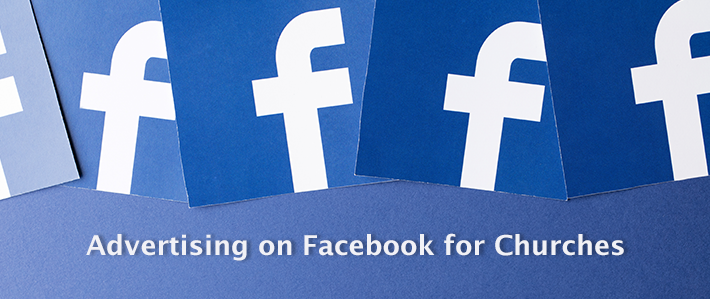
Advertising on Facebook isn’t as difficult or expensive as one might assume it could be. And it can really help your church increase its visibility in your community.
It’s important to note that increasing the visibility of your church’s Facebook page, or the reach and engagement of your posts, isn’t a goal in and of itself. We know our mission is for people to be connected with Jesus and His people, the Church, and to be fed by the Word and Sacraments. We don’t want our Facebook stats to improve but have our disciple-making remain static.
Yet, at the same time, people spend lots and lots of time on social media, including Facebook. The fastest growing demographic on Facebook is people older than 55, not unlike many of our congregations.
And so, we want to use these social networks responsibly to connect people to Jesus. We provide opportunities for people to ask questions, learn more about the Christian faith, and use those electronic interactions to eventually give them the ability to connect in-person with a church worker or layperson.
What is Facebook Advertising?
Advertising on Facebook is a way for your church to be visible to people who may not have ever heard of you, or those who drive by daily and wonder what the whole Lutheran thing is about. It’s a great way for members, those who are rarely in attendance and those who are perpetually involved alike, to be reminded of events and opportunities to be involved.
There are two main buckets of advertising on Facebook: page promotions and boosted posts. Page Promotions refer to a group of actions designed to promote your page, increase traffic to your website, or provide access to a contact form. Boosted posts, on the other hand, are designed to increase visibility of a specific post, usually an important announcement or event.
The benefit of either type of advertising, with the exception of Facebook’s new-ish ongoing promotion feature ($35/mo), is that you can choose your budget to spend on advertising. Once you decide how much to spend on a certain advertisement, you choose the duration you’d like to run your ad for. You can also advertise to certain demographics, including age, gender, location, and even interest areas.
How It’s Done
I’ll provide an example of setting up an advertisement using the Minnesota South District page I manage.
First, choose the post you’d like to boost. Click the “Boost Post” button.
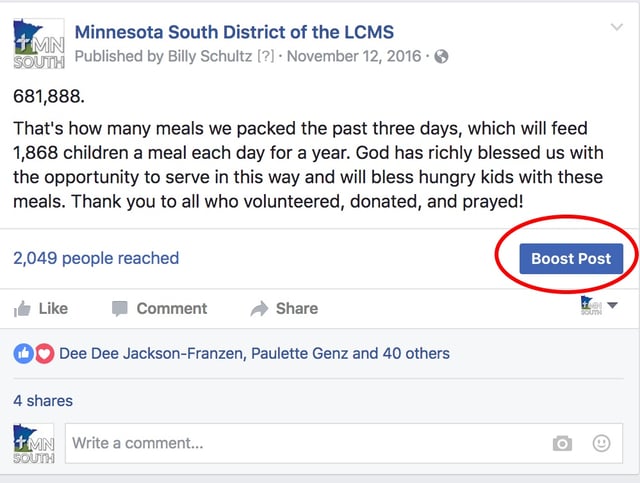
You’ll be taken to the interface that lets you customize your audience, budget, and duration of the advertisement. You’ll also be able to preview what the ad looks like on both mobile and desktop versions of Facebook.
Start at the top and decide what your audience is. You’ll note that you can boost for essentially an internal or external audience.
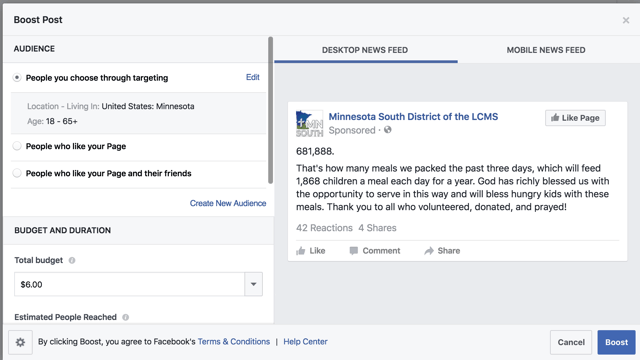
Next, input your budget for the ad, and choose your desired duration for the ad to run. You’ll see that Facebook estimates how many people will be reached based on the budget and duration. If you hover over the i icon next to that estimate, you’ll see Facebook’s disclaimer about that estimate. You could easily outperform that estimate if there are enough people sharing and interacting (liking/commenting) with the post.
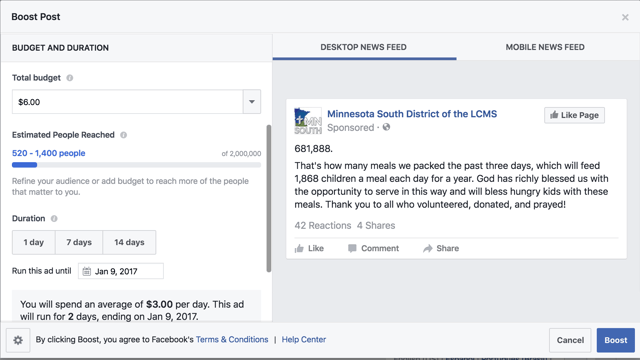
Finally, choose your payment information and click “boost.” Facebook will approve the ad after reviewing it, and it’ll run. Facebook will only charge you for the ad after it’s done running, so if you decide to end the ad before its scheduled end date, you’ll be charged a prorated amount of your budget.
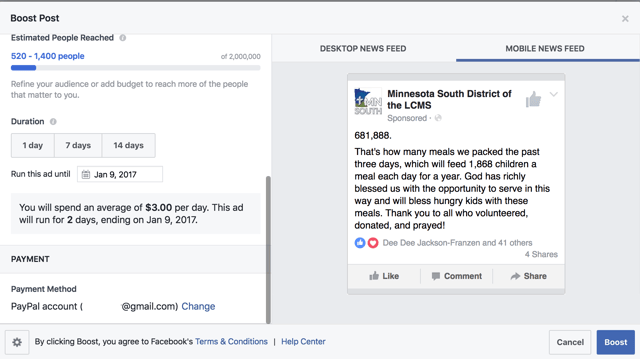
Facebook doesn’t always approve ads, and it’s usually because of the type of content. Usually, this happens when you try to promote a wordy post. If this is an issue, perhaps consider posting the longer post on your website, and link to the post on Facebook with a short quote and relevant, compelling image.
A Real-Life Example
One successful boosted post I’ve run is when we announced our district-wide Feed My Starving Children servant event. As you can see, based on the stats, almost 70% more people were reached with the post because of the paid boost. We spent $20 over a week, and our target was people who like our page and our friends*.
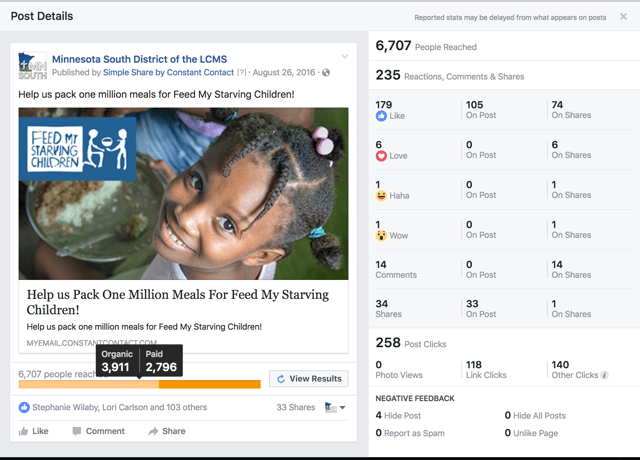
This is an example of how Facebook advertising has proven effective in my ministry setting. If you’ve done advertising on Facebook, what are some experiences you’ve had? Let us know in the comment section below!
Here’s some further reading about the pros and cons of advertising on Facebook. It’s from a business perspective, but it’s a pretty good snapshot of things to consider.
*It’s a bit different in the district world when you can’t target one specific town or zip code, so we typically target the people who already like our page and their friends, hoping to reach more of our church members and workers.
For more content like this, subscribe to the CTS blog Technology & Your Ministry!
























